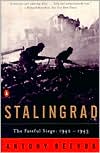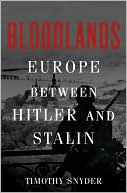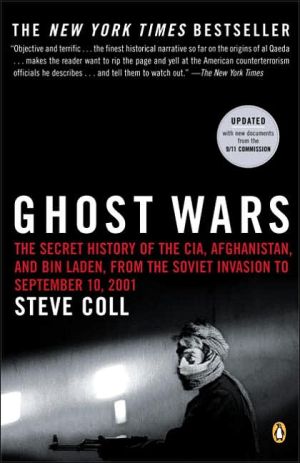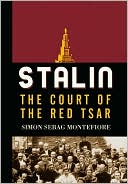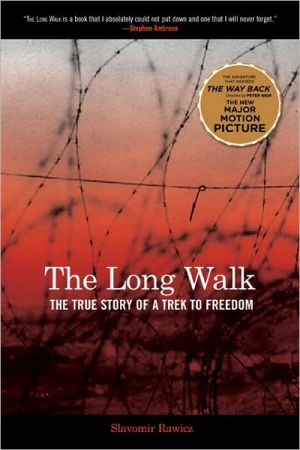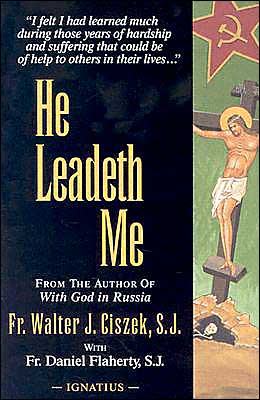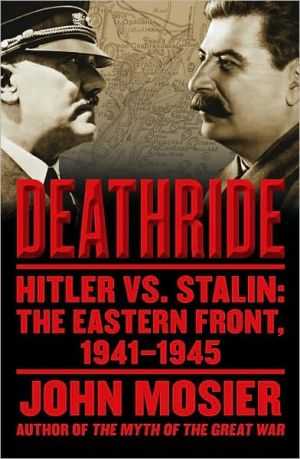Stalingrad, The Fateful Siege, 1942-1943
Historians and reviewers worldwide have hailed Antony Beevor's magisterial Stalingrad as the definitive account of World War II's most harrowing battle. In August 1942, Hitler's huge Sixth Army reached the city that bore Stalin's name. In the five month siege that followed, the Russians fought to hold Stalingrad at any cost, then caught their Nazi enemy in an astonishing reversal. As never before, Stalingrad conveys the experience of soldiers on both sides as they fought in inhuman...
Search in google:
This gripping history is the definitive account of the battle that shifted the tide of World War II. Historians and reviewers worldwide have hailed Antony Beevor's magisterial Stalingrad as the definitive account of World War II's most harrowing battle. In August 1942, Hitler's huge Sixth Army reached the city that bore Stalin's name. In the five month siege that followed, the Russians fought to hold Stalingrad at any cost, then caught their Nazi enemy in an astonishing reversal. As never before, Stalingrad conveys the experience of soldiers on both sides as they fought in inhuman conditions, and of civilians trapped on an urban battlefield. Antony Beevor has interviewed survivors and discovered completely new material in a wide range of German and Soviet archives, including reports of prisoner interrogations, desertions, and executions. The battle of Stalingrad was the psychological turning point of World War II; as Beevor makes clear, it also changed the face of modern warfare. As a story of cruelty, courage, and human suffering, Stalingrad is unprecedented and unforgettable."A fantastic and sobering story . . . fully and authoritatively told." -Richard Bernstein, The New York Times
The silence that fell on 2 February in the ruined city felt eerie for those who had been used to destruction as a natural state. Grossman described mounds of rubble and bomb craters so deep that the low angled winter sunlight never seemed to reach the bottom, and 'railway tracks, where tanker wagons lie belly up, like dead horses.'\ Some 3,500 civilians were put to work as burial parties. They stacked frozen German corpses like piles of timber at the roadside, and although they had a few carts drawn by camels, most of the removal work was accomplished with improvised sleds and handcarts. The German dead were taken to bunkers, or the huge anti-tank ditch, dug the previous summer, and tipped in. Later, 1,200 German prisoners were put to work on the same task, using carts, with humans instead of horses pulling them. 'Almost all members of these work parties,' reported a prisoner of war, 'soon died of typhus.' Others, 'dozens each day' according to an NKVD officer in Beketovka camp - were shot on the way to work by their escorts.\ The grisly evidence of the fighting did not disappear swiftly. After the Volga thawed in spring, lumps of coagulated blackened skin were found on the river bank. General de Gaulle, when he stopped in his Stalingrad on his way north to Moscow in December 1944, was struck to find that bodies were still being dug up, but this was to continue for several decades. Almost any building work in the city uncovered human remains from the battle.\ More astonishing than the number of dead was the capacity for human survival. The Stalingrad Party Committee held meetings in all districts 'liberated from Fascist occupation', and rapidly organized a census. They found that at least 9,976 civilians had lived through the fighting, surviving in the battlefield ruins. They included 994 children, of whom only nine were reunited with their parents. The vast majority were sent off to state orphanages or given work clearing the city. The report says nothing of their physical or mental state, witnessed by an American aid worker, who arrived very soon after the fighting to distribute clothes. 'Most of the children', she wrote, 'had been living in the ground for four or five winter months. They were swollen with hunger. They cringed in corners, afraid to speak, to even look people in the face.'\ The Stalingrad Party Committee had higher priorities. 'Soviet authorities were immediately reinstalled in all districts of the city', it reported to Moscow. On 4 February, Red Army Commissars held a political rally for 'the whole city', both civilian survivors and soldiers. This assembly, with its long speeches in praise of Comrade Stalin and his leadership of the Red Army, was the Party's version of a service of thanksgiving.\ The authorities did not at first allow civilians who had escaped to the East Bank to return to their homes, because of the need to clear unexploded shells. Mine-clearance teams had to prepare a basic pattern of 'special safe paths'. But many soon managed to slip back over the frozen Volga without permission. Messages appeared chalked on the side of ruined buildings, testifying to the numbers of families broken up by the fighting: Mama, we are all right. Look for us in Beketovka. Klava.' Many people never discovered which of their relatives were alive or dead until after the war was over.
Stalingrad List of Illustrations and Maps\ Preface\ Part One. 'The World Will Hold Its Breath'\ 1. The Double-Edged Sword of Barbarossa\ 2. 'Nothing is Impossible for the German Soldier!'\ 3. 'Smash in the Door and the Whole Rotten Structure Will Come Crashing Down!'\ 4. Hitler's Hubris: The Delayed Battle for Moscow\ Part Two. Barbarossa Relaunched\ 5. General Paulus's First Battle\ 6. 'How Much Land Does a Man Need?'\ 7. 'Not One Step Backwards'\ 8. 'The Volga is Reached!'\ Part Three. 'The Fateful City'\ 9. 'Time is Blood': The September Battles\ 10. Rattenkrieg\ 11. Traitors and Allies\ 12. Fortresses of Rubble and Iron\ 13. Paulus's Final Assault\ 14. 'All For the Front!'\ Part Four. Zhukov's Trap\ 15. Operation Uranus\ 16. Hitler's Obsession\ 17. 'The Fortress Without a Roof'\ 18. 'Der Manstein Kommit!'\ 19. 'Christmas in the German Way'\ Part Five. The Subjugation of the Sixth Army\ 20. The Air-Bridge\ 21. 'Surrender Out of the Question'\ 22. 'A German Field Marshall Does Not Commit Suicide with a Pair of Nail Scissors!'\ 23. 'Stop Dancing! Stalingrad Has Fallen'\ 24. The City of the Dead\ 25. The Sword of Stalingrad\ Appendix A: German and Soviet Orders of Battle, 19 November 1942\ Appendix B: The Statistical Debate: Sixth Army Strength in the Kessel\ References\ Source Notes\ Select Bibliography\ Index
\ Richard BernsteinA fantastic and sobering story...fully and authoritatively told. \ —The New York Times\ \ \ \ \ Richard BernsteinA fantastic and sobering story...fully and authoritatively told.\ — The New York Times\ \
